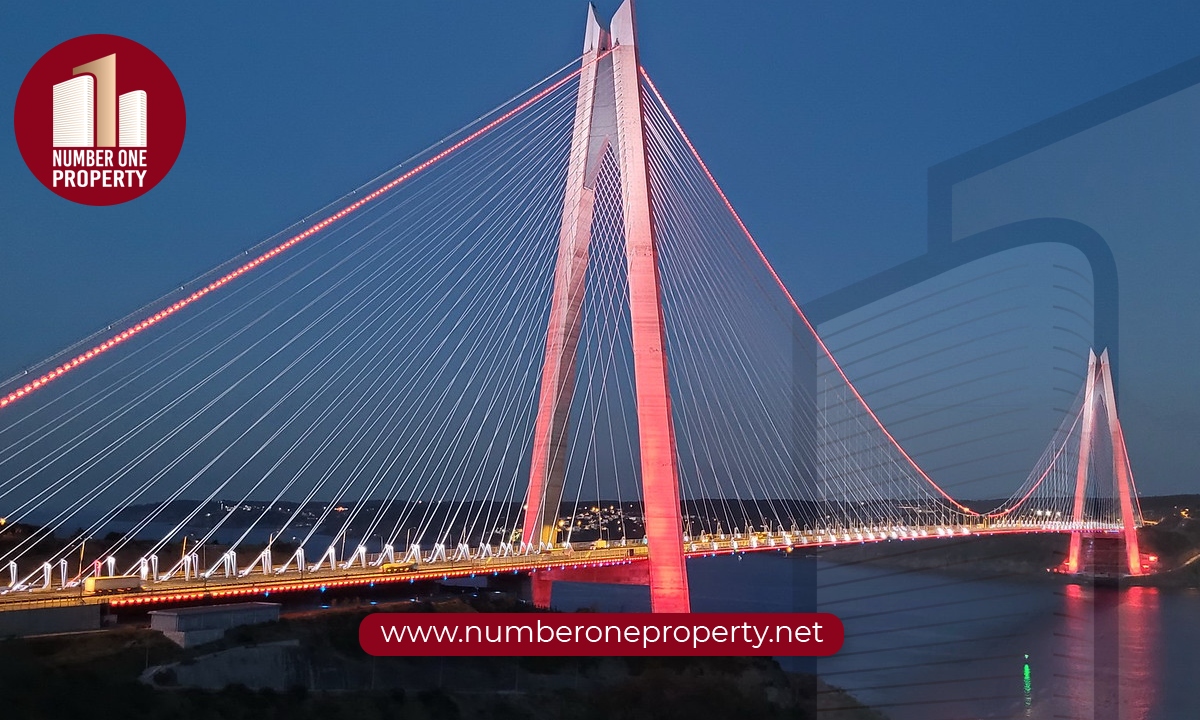Istanbul, a majestic city, is a vibrant and historic melting pot of cultures and traditions. One of the most iconic features of this enchanting metropolis is its bridges, which serve as physical and symbolic links between the two continents.
The Istanbul bridges connect the Asian and European sides of the city and bridge the gap between different cultures and histories.
From the majestic Bosphorus Bridge to the charming Galata Bridge, these structures play a crucial role in uniting the diverse elements that make Istanbul unique.
In this article, we will explore the significance of these bridges in connecting continents and cultures and delve into the rich history and symbolism they embody in the dynamic city of Istanbul, Turkey.
Historical Context
Historically known as Byzantium and later Constantinople, Istanbul has long been a crucial hub for trade and transportation due to its strategic location straddling the Bosphorus Strait, which separates Europe and Asia.
Before constructing iconic structures such as the Bosphorus Bridge and Yavuz Sultan Selim Bridge, crossing the Bosphorus Strait was a significant challenge requiring innovative solutions. It was also challenging and time-consuming, requiring ferries or other means of transportation.
The development of suspension bridges and other engineering marvels transformed the city's landscape and revolutionized how people and goods moved between Europe and Asia.
By exploring the historical context of crossing the Bosphorus, we understand how these bridges have shaped Istanbul's history and continue bridging the gap between cultures and continents.
The evolution of transportation infrastructure in Istanbul, particularly the construction of bridges, has played a pivotal role in shaping the city's economy and culture.
By facilitating the movement of people and goods, bridges have strengthened Istanbul's position as a global trading center and a bridge between East and West.
The Bosphorus has always been a vital waterway for trade, connecting the Black Sea to the Mediterranean and providing a gateway between the East and the West.
The city's position at this crossroads of continents made it a melting pot of cultures, religions, and goods. Merchants from all over the world converged in Istanbul to exchange goods, ideas, and technologies.
The first bridge, the Galata Bridge, was built in the 19th century and provided a direct link between the European and Asian sides of the city.
This bridge facilitated the movement of people, goods, and services, making it easier for merchants to transport their products and for travelers to explore both sides of the city.
Subsequent bridges, such as the Bosphorus Bridge (completed in 1973) and the Fatih Sultan Mehmet Bridge (completed in 1988), further improved connectivity between Europe and Asia.
These modern suspension bridges eased traffic congestion and enhanced trade opportunities by enabling faster and more efficient transportation of goods.
Moreover, bridges have become iconic landmarks that symbolize Istanbul's unique position as a city that bridges continents and cultures.
The Bosphorus Bridge (15 July Martyrs Bridge)
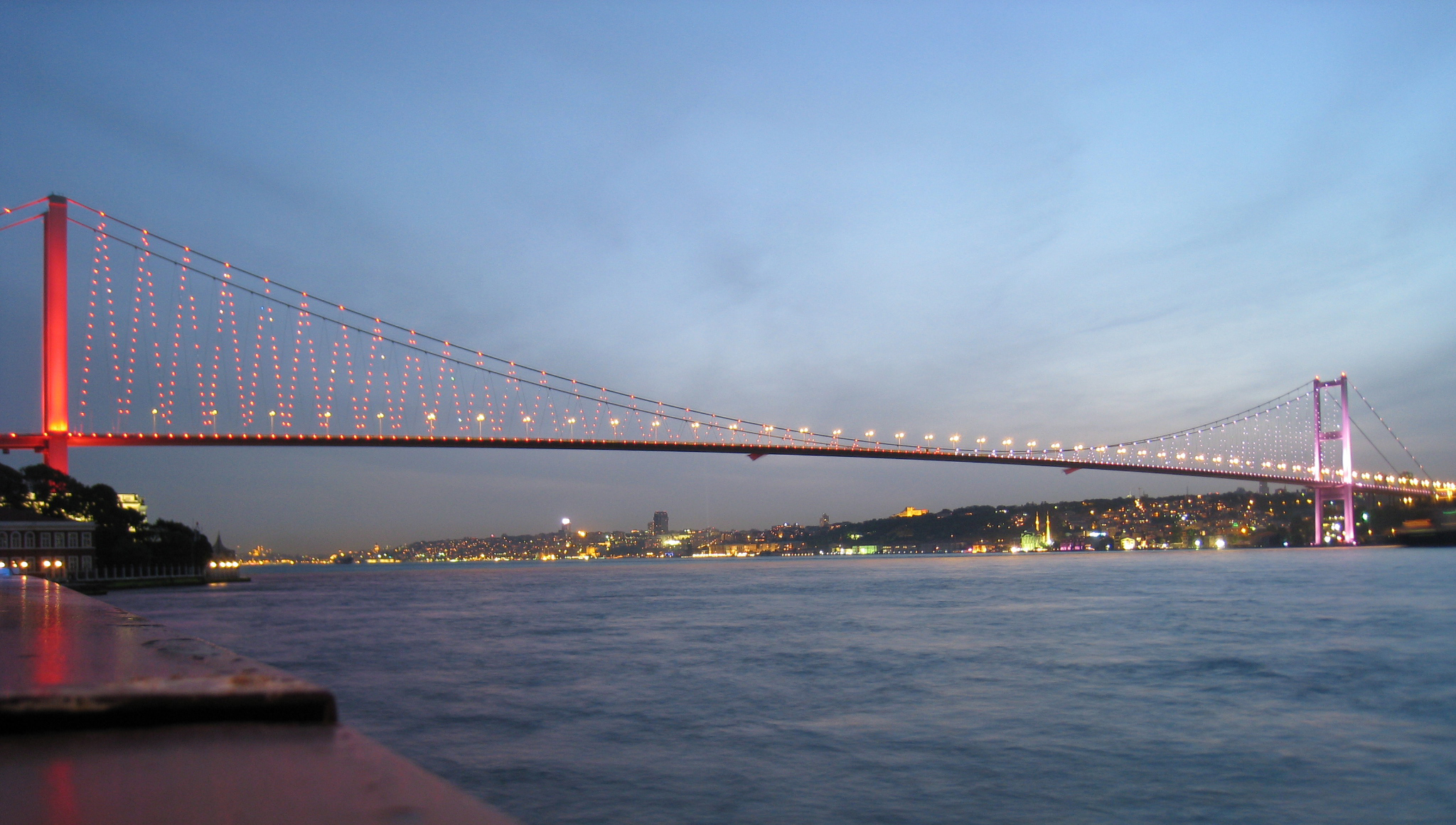
The Bosphorus Bridge, also known as the 15 July Martyrs Bridge, is significant in Istanbul's history and skyline.
Constructed in 1973, this iconic suspension bridge is a vital link between Europe and Asia, showcasing Istanbul's role as a bridge between continents.
With its impressive architectural design and technical specifications, including a span of 1,560 meters and a height of 64 meters above the water, the bridge stands as a symbol of connectivity and progress.
Beyond its engineering feats, the Bosphorus Bridge plays a crucial role in daily commutes, easing traffic congestion and facilitating the movement of people and goods between the city's two sides.
As a prominent feature of Istanbul's skyline, the Bosphorus Bridge enhances the city's aesthetic appeal. It represents Istanbul's historical and cultural significance as a meeting point between East and West.
The Fatih Sultan Mehmet Bridge (FSM Bridge )
The construction of the Fatih Sultan Mehmet Bridge, also known as the Second Bosphorus Bridge, was necessitated by the increasing traffic congestion in Istanbul and the need for a second crossing over the Bosphorus.
Completed in 1988, the bridge serves as a vital link between Europe and Asia, complementing the Bosphorus Bridge in facilitating the movement of people and goods across the city.
With a total length of 1,510 meters and a height of 105 meters above the water, the Bridge boasts an impressive design that incorporates both aesthetic appeal and structural integrity.
The bridge's construction faced various challenges, including the region's seismic activity and the Bosphorus Strait's complex geology.
However, upon completion, the bridge significantly contributed to relieving traffic congestion in Istanbul, providing a faster and more efficient route for commuters.
In modern Istanbul, the Bridge symbolizes progress and connectivity, reflecting the city's dynamic and cosmopolitan character.
Locals rely on the bridge for their daily commutes, appreciating its role in easing traffic congestion and improving mobility.
The bridge offers tourists a unique vantage point to admire Istanbul's breathtaking skyline and witness the confluence of cultures at this historic meeting point between continents.
Overall, the Bridge holds a special place in the hearts of Istanbul's residents and visitors. It embodies the city's spirit of innovation and commitment to enhancing connectivity.
The Yavuz Sultan Selim Bridge
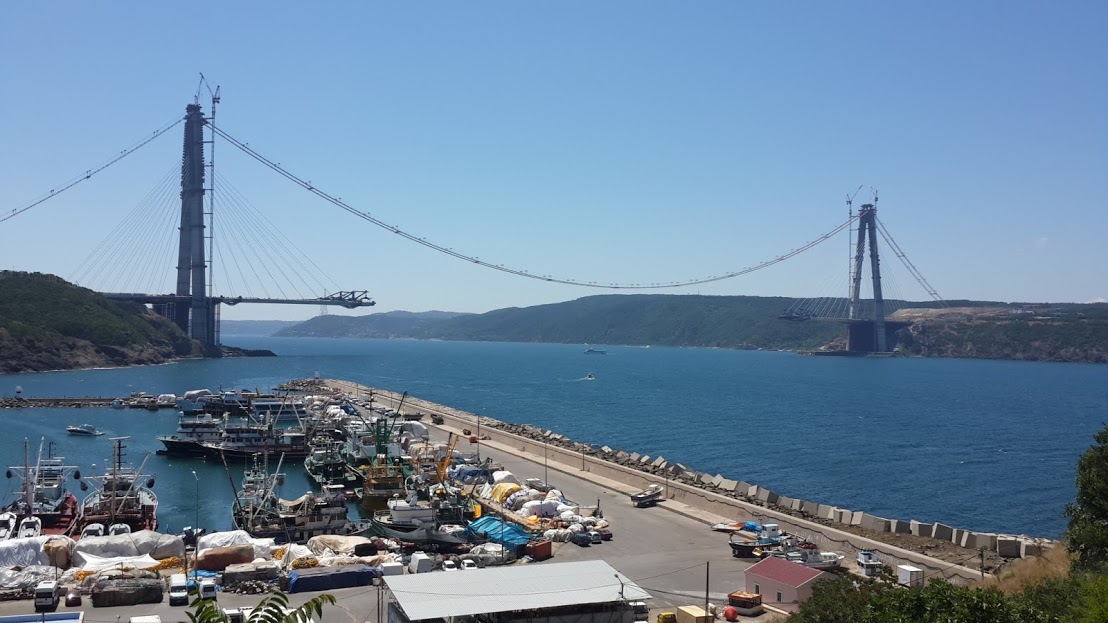
The construction of the Yavuz Sultan Selim Bridge, also known as the Third Bosphorus Bridge, was driven by the strategic importance of providing an additional crossing over the Bosphorus to alleviate traffic congestion and enhance connectivity in Istanbul.
Completed in 2016, the bridge stands out for its unique architectural and engineering features, including its impressive length of 2,164 meters and 322 meters above the water, making it the tallest and widest bridge in the world.
The bridge's innovative design incorporates cutting-edge technology and materials, setting it apart from its predecessors and showcasing Turkey's engineering prowess on the global stage.
The Yavuz Sultan Selim Bridge has reduced travel times and facilitated access to new markets and opportunities, leading to economic development in the surrounding regions.
Additionally, the bridge has helped to alleviate congestion on other key transportation routes, contributing to a more sustainable urban environment in Istanbul.
The Galata Bridge
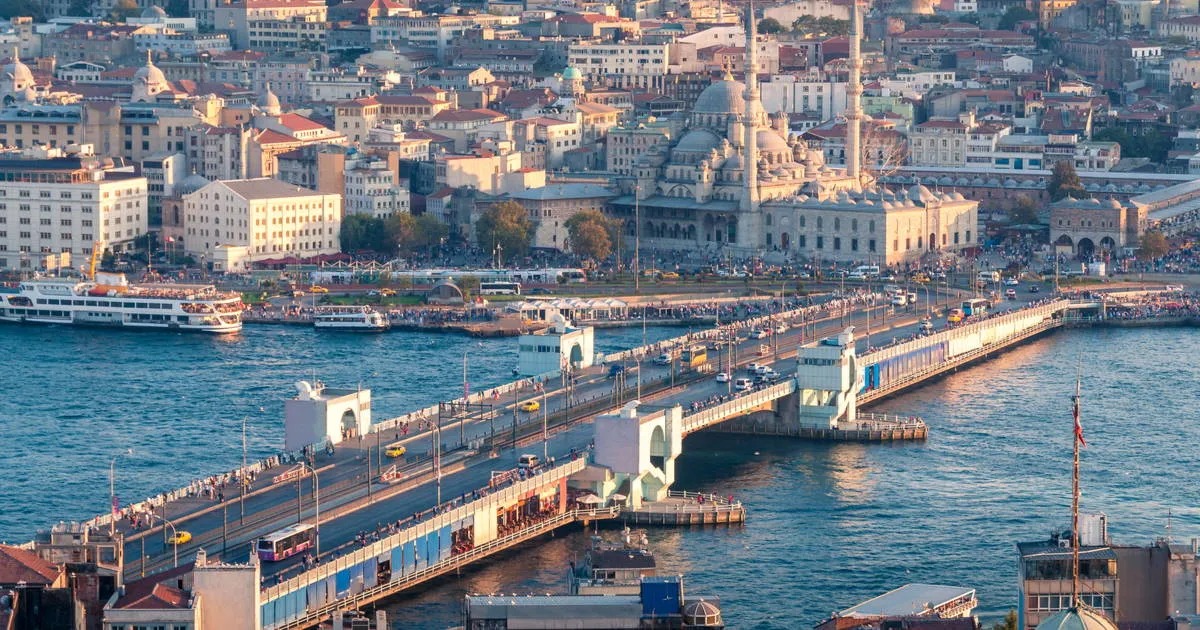
The Galata Bridge, spanning the Golden Horn and connecting the vibrant districts of Karaköy and Eminönü, holds significant historical and cultural importance in Istanbul.
From its humble beginnings as a wooden bridge in the 19th century to its current iconic status as a modern suspension bridge, the Galata Bridge has become a symbol of the city's connectivity.
Beyond its functional role as a transportation route, the bridge serves as a social and cultural meeting point, attracting locals and tourists with its bustling atmosphere, charming cafes, and picturesque cityscape views.
Renowned for its lively fishing scene and vibrant street life, the Galata Bridge embodies the spirit of Istanbul as a melting pot of diverse cultures and traditions, making it a must-visit destination for those seeking to immerse themselves in the city's rich heritage.
Lesser-Known Bridges: Uniting Neighborhoods and Preserving History
While the Galata Bridge is a well-known symbol of connectivity in Istanbul, the Bosphorus Bridge also plays a significant role in linking the European and Asian sides of the city.
Other bridges, such as the Unkapanı (Atatürk) Bridge and the Golden Horn Metro Bridge, contribute to the city's transportation network and cultural heritage.
These bridges may not receive as much attention as the Galata and Bosphorus Bridges. Still, they are essential for local commerce and mobility as vital links between different parts of Istanbul.
Exploring these lesser-known bridges provides a deeper understanding of Istanbul's diverse history and architectural significance, highlighting the intricate connections that shape the city's urban fabric.
Beyond their functional purposes, these bridges symbolize Istanbul's layered history, showcasing its rich past and cultural diversity.
Engineering Marvels and Architectural Beauty
The construction of Istanbul's bridges, including the Galata, Bosphorus, Unkapanı, and Golden Horn Metro Bridges, presented significant engineering challenges due to the city's unique geography and historical context.
Engineers had to navigate the city's hilly terrain, seismic activity, and the need to accommodate maritime traffic while ensuring structural integrity.
The innovative solutions developed to overcome these challenges showcase the engineering prowess required to create these vital links between the city's European and Asian sides.
Moreover, the aesthetic considerations in bridge design are crucial in complementing Istanbul's rich architectural heritage.
The intricate details, elegant arches, and ornate decorations on these bridges reflect the city's diverse cultural influences and historical significance.
By blending functionality with beauty, Istanbul's bridges stand as engineering marvels and architectural masterpieces that enhance the city's skyline and showcase its unique character.
The Bridges at Night: Illuminating Istanbul
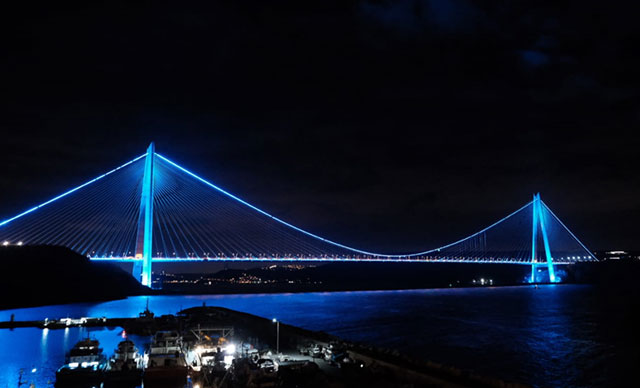
As the sun sets over Istanbul, a magical transformation takes place. The city's bridges come alive with dazzling lights, illuminating the night sky and creating a mesmerizing spectacle.
The carefully designed lighting schemes highlight the architectural beauty of structures like the Galata, Bosphorus, Unkapanı, and Golden Horn Metro Bridges, turning them into beacons of light that reflect on the shimmering waters below.
This enchanting display enhances the city's nightscape and adds a touch of romance and mystique to Istanbul's iconic landmarks.
These bridges are focal points for cultural events and celebrations like the annual Istanbul Marathon.
Amidst cheering crowds and vibrant displays of lights, participants cross these historic structures, creating a unique and unforgettable experience that further solidifies the bridges' role as integral parts of Istanbul's cultural fabric.
Future Prospects: Bridging Tomorrow
Looking towards the future, Istanbul's skyline is set to undergo further transformation with upcoming bridge projects and ambitious plans for infrastructure development.
These new bridges will serve as vital links in Istanbul's transportation network, facilitating smoother movement of people and goods and potentially driving economic growth in surrounding areas.
Integrating these new structures into the urban fabric promises to foster cultural exchange and social cohesion as they unite diverse communities and create new spaces for interaction and engagement.
As Istanbul bridges the gap between its past and future, these upcoming projects represent hope for a more connected, vibrant, and inclusive cityscape.
Conclusion (The Bridges of Istanbul)
Bridges of Istanbul transcend their physical existence to embody deeper meanings of resilience, unity, and progress.
They serve as symbols of connection, not just between continents but also between cultures and communities.
As we reflect on the bridges, we see them not just as engineering marvels but as monuments to human ingenuity and cultural harmony.
These structures stand as testaments to the city's rich history and bright future, bridging the gap between the past and the present and paving the way for a more connected and inclusive society.
These bridges genuinely represent the spirit of a city that continues to evolve and grow, embracing its diversity and forging new pathways toward a brighter tomorrow.
Read Also:
What do you Know about the Bosphorus Bridge - Istanbul?
Exploring the New Istanbul Canal
Exploring the New Istanbul Airport: A Gateway to Modern Travel Luxury


